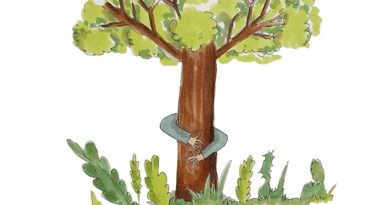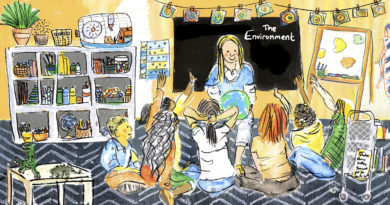Resilience in Children
Helping Families Manage Fears and Stress Surrounding COVID-19
When our daughter was eight years old we decided to move from the U.S. to a community in Switzerland with extensive ethnic and language diversity. While my daughter’s experiences are uncharted territory for us, we have always felt a sense of comfort provided by the notion that our decision-making was supported by a foundation of research, contemplation and foresight. That is, until 2020!
We couldn’t have predicted how COVID-19, a virus I could previously only imagine in my nightmares, would change our world. With regards to our daughter, we couldn’t have anticipated that the end of my daughter’s middle school career would be spent on a computer and that all school-wide celebratory events would be cancelled. I had no idea that she would have to wear a mask in public for fear of catching a virus that was infecting and killing millions of people around the world. Bottom line, when it came to COVID, we definitely didn’t have a strategic family plan! Yet here we are a year into a global pandemic, and it raises the question: How do we help our children process and manage this experience without being overwhelmed by fear, trauma, uncertainty, sadness, loneliness, anger…?
Are our children resilient?
I have often heard people say, in relation to COVID-19 and other challenging situations, “Don’t worry! Kids are resilient.” Resilience is defined as the process of handling stress and recovering from trauma or adversity. So before we take a sigh of relief and agree that our children truly are O.K., let’s ask ourselves: Is the notion that kids are naturally resilient really true?
The definition of resilience involves the phrases “the process of” and “recovering from,” implying that resilience is not an innate skill, but one developed over time. Therefore no, children are not innately resilient. Children, like adults, try to survive, but that doesn’t mean that trauma and stress won’t have a significant impact on their health or a residual impact on their lives. Oftentimes, we don’t know the degree of their struggle, because children don’t have the means of articulating how they are feeling or what they are experiencing. Children typically need to first overcome or process insignificant stressors and obstacles in a supportive environment. These successes help them build their confidence, bolstering hope and developing problem solving skills that will enable them to manage the next greater challenge.
It can sometimes be painful watching our children get hurt, make mistakes and fail. Sheltering your children from all stressors sets them up for failure because they need opportunities to develop the skills, hope and confidence required to overcome future issues. When our child has a fight with their friend, doesn’t make a team, fails a test, falls down and gets hurt, it is not in our child’s best interest to have a parent make their problems go away, nor should we withdraw all support and allow them to fend for themselves. Our role is to provide unconditional love, to encourage problem solving and to respect their emotions. We have to remember that some stress provides opportunities for growth.
Developing resilience
As we have hit the one-year mark of this global pandemic, it is important that we focus our efforts on creating environments in which we help our children develop resilience. The Center on the Developing Child at Harvard University says there are four key factors to building resilience:
1. Supportive relationships with at least one adult. During my 22-year teaching career and 16-years as a parent, I have also come to realize it isn’t only necessary for children to have a supportive relationship with a parent. They also benefit from support from adults outside their home. Teenagers with supportive parents also benefit from the support of adults other than their parents, such as coaches, teachers, relatives, etc., as they work through seeking independence from their parents.
2. A sense of self-efficacy and perceived control. As a family, you can also create scenarios in which your children have small amounts of control over situations. This starts with giving your child choices and allowing them to make their own decisions. For example, “Would you like to go to bed now?” can be changed to, “Would you like to go to bed in 5 minutes or 10 minutes?” Instead of saying, “you must wear a hat today – it is cold,” you can ask, “Do you want to wear your blue or red hat?” Simple shifts in language can put perceived control back into the hands of the child.
3. Self-regulating and adaptive skills are vital to the development of a child. Two common examples involve managing emotions and transitioning from one activity to another. Parents can help develop self-regulation skills by giving their children a five-minute warning before changing activities. For example, five minutes before everyone must come to the dinner table, let your children know. In this way, you are helping your child understand an abstract concept, time, but you are also giving them a warning so the need to transition is not a surprise. Over time, these five-minute warnings will become ingrained and your children will quickly regulate difficult emotions when required to leave a fun activity. Eventually, they will be able to prepare themselves for the end of an activity on their own. It is also important for parents to model self-regulation for their children, showing their children how to manage difficult emotions.
Dealing with scary things
Another important component of helping your kids deal with Covid is to have a communication strategy. We should understand how to best speak with our children about scary things going on in the world. NPR interviewed multiple child development experts who suggested the following:
-
- Limit exposure to the news. If you feel it is appropriate for your child to watch the news, make sure you do so together. It is important to discuss what they saw, help them process it and answer their questions immediately.
-
- Talk to your children about what they have heard from others and how they are feeling about what is happening. Your children may not tell you what is going on without prompting. Think about how often you ask your child about school or how things are going, and they say, “Nothing, really” or “Fine.” Asking them specific, open-ended questions is more likely to encourage them to talk about what is going on. For example, did anyone in your class talk about the corona virus today? What do you think about everyone wearing masks at the store?
-
- Give children the facts but also provide context. The “why” is very important for all of us when we take in new information. For example, talk with older children about why this pandemic is so dangerous in our era of global travel? The “why” helps us categorize information appropriately in our mind’s filing system. When we look at facts and context it can help our children take an event out of their mind’s folder labeled fears and place it in the factual folder of history or medical information.
-
- Avoid labeling people as bad or evil because this may only heighten fears in our children. This is valuable when discussing the news or how people in general are handling the virus and how you feel about it.
-
- Take positive action together – how can you be a helper? Coming up with ideas to be a helper or a problem solver provides children with a sense of control of their environment, even amid chaos, and also a sense of empowerment that they can make a difference.
It is important to manage adult conversations around children, as even young children can absorb tone and catch pieces of adult conversation that aren’t developmentally appropriate and may evoke fear. If you are struggling yourself, be careful that you do not overshare your fears. It is valuable to talk to your child about who they speak with when you have fears, but do your best not to overwhelm them with your own fears. A helpful intervention for children who are feeling uncertain or scared is for parents and educators to model positive conversations, talk to their kids about which techniques that have worked for them, or fears that they had but were able to overcome.
We must recognize that fears about corona or the impact it is having on their lives will likely present itself in many ways. Oftentimes, children act out or have fears about something that is completely separate from what is actually bothering them. Similar to the child who is hungry and decides to hit her brother or have a tantrum over the TV being turned off or the classic tired child who is hysterically crying about having to go to bed. Children of all ages will need more attention and compassion during this time to help them feel safe.
Meditation is an easy tool we can all use to provide calm for both kids and parents. There are some really great programs for kids you can find online, but it is also really simple to just have your child focus on deep breaths while feeling or watching their belly move. You can also ask them to take a few moments to focus on smelling 3 things, hearing 3 things and seeing 3 things. These techniques give them a chance to quiet their minds. If you would like to increase positive thoughts, kids typically enjoy talking about what they are grateful for in their day. This is an exercise that can be done before meal time or bed and kids are often excited to share. I also recommend a loving kindness meditation, a type of meditation that is very concrete because it involves thinking about yourself and others in a loving way and wishing them well.
As we take measure of this past year and look forward – towards continued struggles – the world can seem like a scary place to raise children. While it is true that children are not innately resilient and won’t necessarily take everything that is happening in stride, you should have confidence in yourself that you are the biggest component of your child’s safety net and that you don’t need to shelter them from everything, but rather, guide them as they learn to manage their fears. Recognize that helping your child through this experience will provide them with the strength, confidence and skills to manage future challenges.
By April Remfrey
April is an American special needs consultant, author of STEP – Strategic Tracking of Educational Progress living, and loving life in Switzerland. In her free time, April loves to hike, cook, and play clarinet in the local concert band. If you live in Switzerland, have a child with special needs, and are looking for a safe and supportive environment, please join the Facebook group Parenting Children with Special Needs in Switzerland.
Illustration by Lemady Rochard
Lemady is a British artist and illustrator living near Einsiedeln. Her first illustrated book The Little Mermaid’s Son by Annahita de la Mare was published in December 2020 and is available on Amazon. She also runs Storycraft classes and parties for children at the Storycraft Studio in Rüschlikon, ZH. She has a background in theatre arts and children’s literature. More information & contact details on her website http://www.lemady.ch
Facebook: http://www.facebook.com/lemadyart
Instagram: http://www.instagram.com/lemady_art




